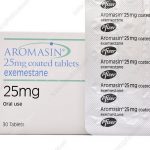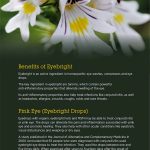Contents
How to Get Rid of Chilblains
Chilblains rarely require treatment and often heal on their own.
To avoid chilblains, refrain from scratching or rubbing the affected area. Scratching or rubbing can break the sensitive skin and increase the risk of infection.
The goal of treatment is to improve blood circulation to the fingers and toes:
- Keep the body warm by wearing gloves, socks, jackets, scarves, and hats.
- Be consistent in protecting against cold exposure.
- Avoid smoking, as it worsens chilblains.
If chilblains do not go away on their own or worsen, seek medical attention.
In severe cases, medication can improve blood supply:
- Take pain relievers such as Tylenol and Advil.
- Treat itching and swelling with topical steroids.
- Use cortisone cream to relieve pain and reduce redness.
- Prescription heparin ointment can improve circulation.
- If infection is suspected, antibiotics may be prescribed.
- Aloe vera gel has healing and anti-inflammatory properties.
- Nifedipine, a medication for high blood pressure, can improve symptoms.
- Use of ultraviolet light for prevention is inconclusive.
Other Remedies for Chilblains
Spices that help improve blood flow include sesame seeds, oats, and almonds.
Avoid dietary fiber-deficient foods and maintain a well-balanced diet.
Supplements
- Supplement a healthy diet with B vitamin niacin, calcium, omega-3 fatty acids, vitamins A and K, and fiber-rich foods.
Footwear
- Wear cotton, bamboo, or woolen socks and leather or canvas shoes.
- Ensure rooms are heated and floors have rugs for warmth.
Exercise
- Engage in exercises that improve blood circulation and body temperature.
- Try cardiovascular exercises for beneficial effects.
Best Home Remedy
- Use warm water with salt to relieve symptoms of chilblains.
- Soak affected areas in the water, avoiding excessive heat.
- Caution: People with diabetes should avoid this remedy.
- Repeat several times a day until chilblains heal.
Unfortunately, there is no cure for chilblains, and most medications only alleviate symptoms.
What Are Chilblains?
Chilblains are painful, red swellings that appear on the tips of the toes and fingers due to sudden blood vessel expansion.
They are skin inflammations accompanied by itching or burning caused by cold exposure and commonly found on small toes, fingers, face, nose, or pressure-sensitive areas.
9 common symptoms of chilblains include:
- Redness or pallor of affected areas
- Numbness
- Hot, tender, itchy skin
- Pain when moving fingers or toes
- Reduced flexibility or stiffness in fingers and toes
- Burning sensation on the skin
- Possible blisters
- Ulcerated or bleeding lesions
- Areas may appear blue as they get congested and swollen
They may leave cracks in the skin when they dry out, potentially leading to infection.
Chilblains are caused by a rapid change from narrow to expanded blood vessels, causing damage and blood leakage to surrounding tissues.
15 common causes and risk factors for chilblains include:
- Rapid change in temperature
- Female gender
- Smoking
- Older age
- Poor nutrition
- Anemia
- Sensitivity to cold
- Hormonal changes
- Poor blood circulation
- Lower body weight
- Diabetes
- Connective tissue diseases and bone marrow disorders
- Damp living conditions or cold environments
- Raynaud’s disease
- Autoimmune conditions such as Lupus
Are Chilblains a Sign of COVID-19?
COVID toe is a phenomenon observed in people with COVID-19. It causes swelling and redness similar to chilblains due to the virus attacking blood vessel linings in the toes.
COVID toes can occur before, during, or after active coronavirus infection. Seek medical attention if you suspect your chilblains are caused by COVID-19.
What is the Outlook of Chilblains?
To manage chilblains without underlying conditions, wear warm clothing and live in insulated housing.
- Chilblains typically run a self-limiting course and can be treated with topical antipruritic medications.
- Vasodilators are effective for treatment and prevention.
- Chilblains rarely cause long-term health issues.
Seek medical attention if chilblains are frequent, do not heal, suspect infection, or occur during warm seasons. Underlying conditions may require treatment.
Make an appointment with your doctor if you experience frequent chilblains, non-healing chilblains, signs of infection, or chilblains during warm seasons. You may have an underlying condition that requires treatment.


